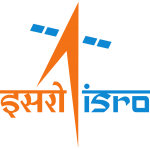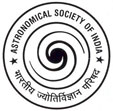September 2018:
The AstroSat Picture of the Month for September 2018 is a photograph of AstroSat itself. The top panel has two photographs of the fully assembled AstroSat. The bottom panel is an artists's conception of the observatory in space. Can you identify each of the five telescopes in the top panel photographs?
Pic Credit: Top panel - ISRO; Bottom panel - ASI POEC, ISRO and Adrita Das
Click here for a full resolution image.


“AstroSat Picture of the Month” is an initiative of the Public Outreach and Education Committee of the Astronomical Society of India and the AstroSat Training and Outreach Team.
AstroSat: A 5-in-1 Observatory
AstroSat is India's first dedicated multi-wavelength space observatory. It was launched into space by ISRO exactly 3 years ago, on 28 September 2015, on board the PSLV-C30. This unique observatory has five instruments on board, four of which can look at the same piece of sky simultaneously. These telescopes give AstroSat the capability of observing in the ultraviolet, X-rays as well as gamma rays. Thus, the range of wavelengths that AstroSat can observe spans a factor of about 16000, from the lowest (200 nm in the Near UV) to the highest (0.012 nm or 100 keV in the gamma rays). These five instruments are the Ultra Violet Imaging Telescope (UVIT), the Soft X-ray Telescope (SXT), the Large Area X-ray Proportional Counter (LAXPC), the Cadmium-Zinc-Telluride Imager (CZTI) and the Scanning Sky Monitor (SSM).
Over the last one year, we have brought you 12 images from AstroSat. These APOMs, or AstroSat Pictures of the Month, have mostly been from the UVIT, since it is best suited for producing images. The strength of the X-ray and gamma ray telescopes lies in their incredibly precise timing and spectral capabilities. We will be bringing you spectra and light curves of interesting objects from time to time too.
Today is the 3rd anniversary of the launch of AstroSat and the 1st anniversary of the APOM project. Hence, this month's APOM is of AstroSat itself! The top two panels are photographs of the fully assembled AstroSat from two different angles. All five telescopes, along with many sensors can be seen. The golden colour is due to the layer wrapping the satellite that thermally insulates it in space. Compare these two photographs with the artists conception of Astrosat in the panel below. Here, each of the five telescopes are labelled, along with the solar panels which were unfurled in space after launch. Can you identify each of these five telescopes in the two photographs in the top panel? Note that the LAXPC is made of three similar units, and the UVIT consists of two telescopes next to each other.
Click here for the booklet published during the launch of AstroSat.
Click here for the entire APOM archive.
More about ASTROSAT
AstroSat, India's first dedicated multi-wavelength space observatory, was launched by ISRO on 28 September, 2015. It has five instruments on board – the Ultra Violet Imaging Telescope, the Soft X-ray Telescope, the Large Area X-ray Proportional Counter, the Cadmium-Zinc-Telluride Imager and the Scanning Sky Monitor.
Get answers to your common queries about ASTROSAT in English, in हिंदी, and in मराठी.

